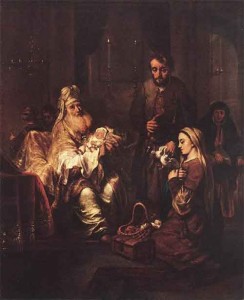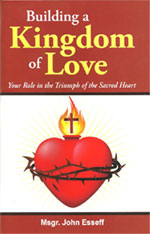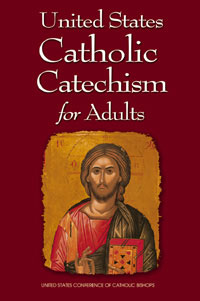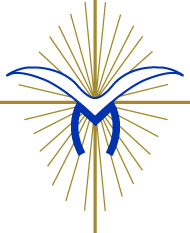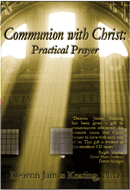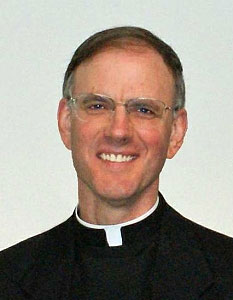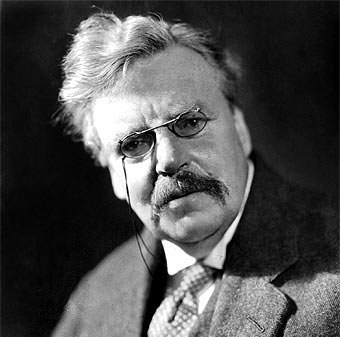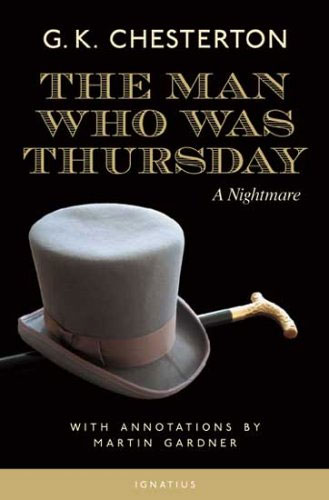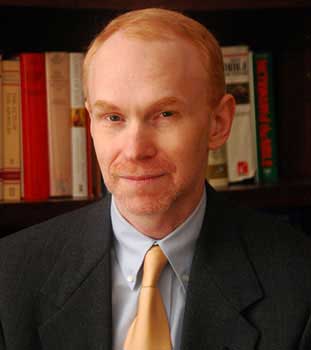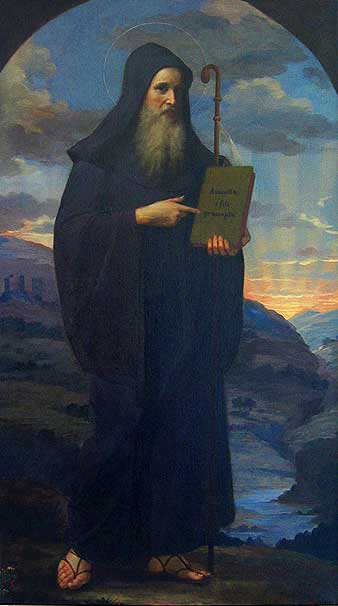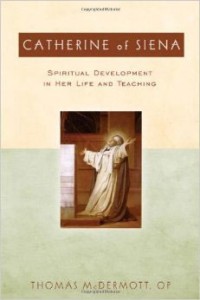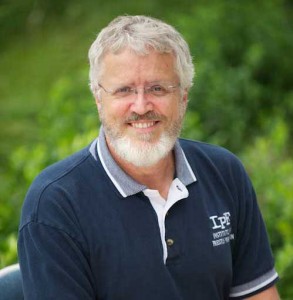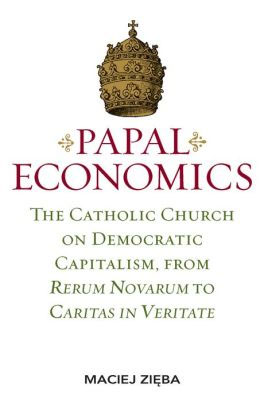THE WAY OF PERFECTION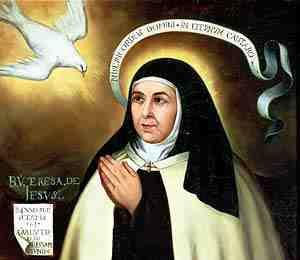
By
St. Teresa of Avila
Chapter 16
[powerpress]
For the pdf containing the complete text and footnotes click here
Describes the difference between perfection in the lives of contemplatives and in the lives of those who are content with mental prayer. Explains how it is sometimes possible for God to raise a distracted soul to perfect contemplation and the reason for this. This chapter and that which comes next are to be noted carefully.
For other audio chapters of
“The Way of Perfection”
THE WAY OF PERFECTION
by
ST. TERESA OF AVILA
Translated & Edited by
E. ALLISON PEERS
from the Critical Editon of
P. SILVERIO DE SANTA TERESA, C.D.
Tags: st. teresa of avila, The Way of Perfection
This entry was posted on Sunday, February 2nd, 2014 at 2:26 pm
You can follow any responses to this entry through the RSS 2.0 feed.
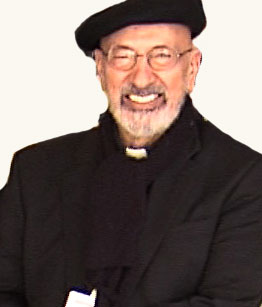 Show 57″ Building a Kingdom of Love” – The Presentation in the Temple
Show 57″ Building a Kingdom of Love” – The Presentation in the Temple
[powerpress]
Msgr. Esseff reflects on the teaching of the Sacred Scriptures for the Feast of the Presentation in the Temple .Do your recognize His Presence?:
Gospel lk 2:22-40
When the days were completed for their purification
according to the law of Moses,
Mary and Joseph took Jesus up to Jerusalem
to present him to the Lord,
just as it is written in the law of the Lord,
Every male that opens the womb shall be consecrated to the Lord,
and to offer the sacrifice of
a pair of turtledoves or two young pigeons,
in accordance with the dictate in the law of the Lord.Now there was a man in Jerusalem whose name was Simeon.
This man was righteous and devout,
awaiting the consolation of Israel,
and the Holy Spirit was upon him.
It had been revealed to him by the Holy Spirit
that he should not see death
before he had seen the Christ of the Lord.
He came in the Spirit into the temple;
and when the parents brought in the child Jesus
to perform the custom of the law in regard to him,
he took him into his arms and blessed God, saying:“Now, Master, you may let your servant go
in peace, according to your word,
for my eyes have seen your salvation,
which you prepared in the sight of all the peoples:
a light for revelation to the Gentiles,
and glory for your people Israel.â€The child’s father and mother were amazed at what was said about him;
and Simeon blessed them and said to Mary his mother,
“Behold, this child is destined
for the fall and rise of many in Israel,
and to be a sign that will be contradicted
—and you yourself a sword will pierce—
so that the thoughts of many hearts may be revealed.â€
There was also a prophetess, Anna,
the daughter of Phanuel, of the tribe of Asher.
She was advanced in years,
having lived seven years with her husband after her marriage,
and then as a widow until she was eighty-four.
She never left the temple,
but worshiped night and day with fasting and prayer.
And coming forward at that very time,
she gave thanks to God and spoke about the child
to all who were awaiting the redemption of Jerusalem.When they had fulfilled all the prescriptions
of the law of the Lord,
they returned to Galilee, to their own town of Nazareth.
The child grew and became strong, filled with wisdom;
and the favor of God was upon him.
Lectionary for Mass for Use in the Dioceses of the United States, second typical edition, Copyright © 2001, 1998, 1997, 1986, 1970 Confraternity of Christian Doctrine;
Msgr. John A. Esseff is a Roman Catholic priest in the Diocese of Scranton. He was ordained on May 30th 1953, by the late Bishop William J. Hafey, D.D. at St. Peter’s Cathedral in Scranton, PA. Msgr. Esseff served a retreat director and confessor to Blessed Mother Teresa. He continues to offer direction and retreats for the sisters of the missionaries of charity around the world. Msgr. Esseff encountered St. Padre Pio, who would become a spiritual father to him. He has lived in areas around the world, serving in the Pontifical missions, a Catholic organization established by Bl. Pope John Paul II to bring the Good News to the world especially to the poor. Msgr. Esseff assisted the founders of the Institute for Priestly Formation and continues to serve as a spiritual director for the Institute. He continues to serve as a retreat leader and director to bishops, priests and sisters and seminarians and other religious leaders around the world.
To obtain a copy of Msgr. Esseff’s book by visiting here
Be sure to visit Msgr. Esseff’s website “Building a Kingdom of Love”
Tags: catholic, catholic podcast, catholic prayer
This entry was posted on Sunday, February 2nd, 2014 at 7:23 am
You can follow any responses to this entry through the RSS 2.0 feed.
Episode 10- Seeking Truth with Sharon Doran – The Temptation of Jesus (PART 2) 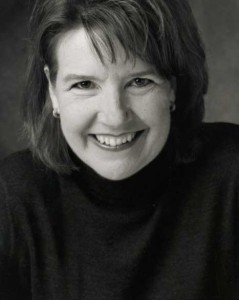 [powerpress]
[powerpress]
Sharon Doran serves as the teaching director of “Seeking Truth.†An experienced Bible Study teacher, Sharon has a passion for scripture that will motivate and challenge you to immerse yourself in God’s Word and apply His message to your every day life.
Episode 10 –
Temptation of Jesus
Matthew 4, Mark 1 and Luke 4 (part 2)
Temptation…. Who can resist it? Led by the Holy Spirit, Jesus goes out to the desert tobattle Satan, the father of lies. Drawing from the Hebrew Scriptures, Sharon shows how this pivotal event in the ministry of Jesus is connected with so many Old Testament figures: Adam, Elijah, Elisha and King David. In addition, Sharon teaches us that the temptations before Jesus are no different than the ones Adam faced, no different than the ones we face. But armed with the Word of God, Jesus triumphs over the Evil One and the angels are sent to minister to Him.
 “Seeking Truth†is an in depth Catholic Bible Study, commissioned by the Archdiocese of Omaha in response to John Paul II’s call to the New Evangelization as well as Pope Benedict XVI’s exhortation for all Catholics to study scripture. To learn more go to:www.seekingtruth.net
“Seeking Truth†is an in depth Catholic Bible Study, commissioned by the Archdiocese of Omaha in response to John Paul II’s call to the New Evangelization as well as Pope Benedict XVI’s exhortation for all Catholics to study scripture. To learn more go to:www.seekingtruth.net
Tags: Desert Temptation of Jesus, Sharon Doran, Temptation of Jesus
This entry was posted on Sunday, February 2nd, 2014 at 5:37 am
You can follow any responses to this entry through the RSS 2.0 feed.
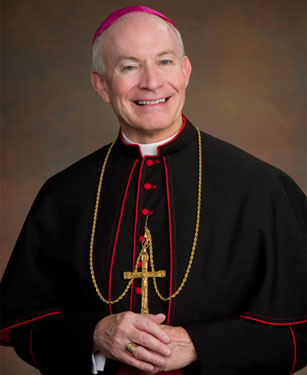 USCCA7- Episode 7-Â The Good News: Â God Has Sent His Son
USCCA7- Episode 7-Â The Good News: Â God Has Sent His Son
[powerpress]
Archbishop Lucas offers insights on the US Catholic Catechism for Adults Chapter 7:
We ponder Christ’s person and his earthly words and deeds in terms of mystery.  His earthly life reveals his hidden divine Sonship and plan for our salvation.  His parables, miracles, sermons, and wisdom sayings help us “to see our God made visible, and so we are caught up in love of the God we cannot see” (First Preface for Christmas).
The Most Reverend George J. Lucas leads the Archdiocese of Omaha.Â
For other episodes in the visit our Archbishop George Lucas page
This programs is based on:
More information can be found here.
We wish to thank the USCCB for the permissions granted for use of  relevant material used in this series.
Also we wish to thank Omar Gutierrez and Sr. Miriam Rita  for their vocal talents in this episode.
Tags: Archbishop Lucas, Catholic Catechism, George Lucas
This entry was posted on Sunday, February 2nd, 2014 at 12:48 am
You can follow any responses to this entry through the RSS 2.0 feed.
Episode 2 -The Centrality of the Eucharist -The Way of Mystery: The Eucharist and Moral Living– Placing the 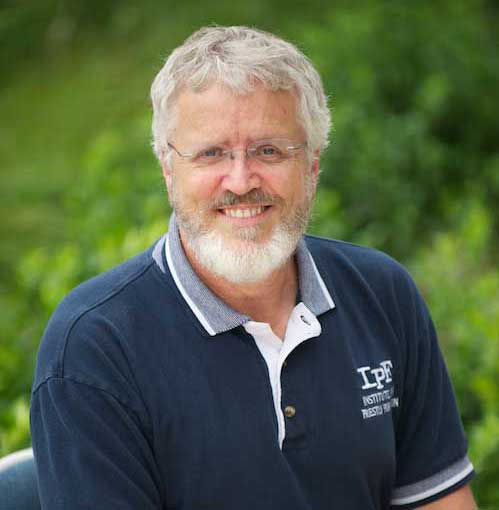 Eucharist as the center of who we are as Catholics part 2
Eucharist as the center of who we are as Catholics part 2
[powerpress]
Deacon James Keating, PhD, the director of Theological Formation for the Institute for Priestly Formation, located at Creighton University, in Omaha, is making available to â€Discerning Hearts†and all who listen, his series of programs entitled “The Way of Mysteryâ€.
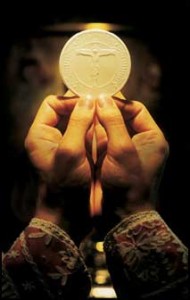 The Vatican II documents remind us that the spiritual journey is not made in a vacuum, that God has chosen to save us, not individually, but as The People of God. The Eucharist must help Christians to make their choices by discerning out of Christ’s paschal mystery. For this process to take place, however, Christians must first understand how the Eucharist puts them in touch with Christ’s passion, death, and resurrection, and what concrete implications being in touch with this mystery has for their daily lives.
The Vatican II documents remind us that the spiritual journey is not made in a vacuum, that God has chosen to save us, not individually, but as The People of God. The Eucharist must help Christians to make their choices by discerning out of Christ’s paschal mystery. For this process to take place, however, Christians must first understand how the Eucharist puts them in touch with Christ’s passion, death, and resurrection, and what concrete implications being in touch with this mystery has for their daily lives.
For more information on the “Institute of Priestly Formation†and for other material available by Deacon Keating, just click here
Don’t forget to pickup a copy of “Communion with Christ†, it is one of the best audio sets on prayer…ever!
Check out Deacon Keating’s “Discerning Heart†page
Tags: Deacon James Keating, Deacon Keating, institute for priestly formation, the eucharist, theological formation
This entry was posted on Sunday, February 2nd, 2014 at 12:35 am
You can follow any responses to this entry through the RSS 2.0 feed.
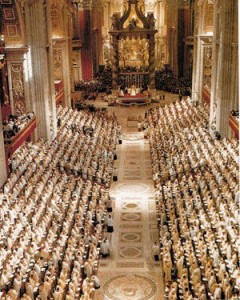 Apostolic Succession of Bishops
Apostolic Succession of Bishops
[powerpress]
There are many forms of church governance among Christians today. In some churches congregations vote to make decisions; in others the church is run by a group of elders; and in still others, authority resides with bishops.
While all Christians point to Scripture to support their church structure, it is very difficult to determine the precise way the early Church was governed from the Bible alone.
But in the year 110 A.D., only about 50 years after most of the New Testament was written, St. Ignatius of Antioch described the early church leadership in his letters:Â Each area was led by a single bishop who was accompanied by priests and deacons in ministry.
Ignatius wrote, “let no one do anything of concern to the Church without the bishop. Let that be considered a valid Eucharist which is celebrated by the bishop or by one whom he appoints. … [T]his … is pleasing to God, so that whatever is done will be secure and valid.â€1
Ignatius himself was with the apostle John, so we have every reason to trust that this basic church structure which the Catholic Church has to this day comes from the apostles themselves.
1 – Letter to the Smyrnaeans 8:1
Tags: Apostolic Succession of Bishops Apostolic Succession, church governance, church structure, the early Church
This entry was posted on Wednesday, January 29th, 2014 at 8:39 am
You can follow any responses to this entry through the RSS 2.0 feed.
Let him who is in desolation consider how the Lord has left him in trial in his natural powers, in order to resist the different agitations and temptations of the enemy; since he can with the Divine help, which always remains to him, though he does not clearly perceive it: because the Lord has taken from him his great fervor, great love and intense grace, leaving him, however, grace enough for eternal salvation.
[powerpress]
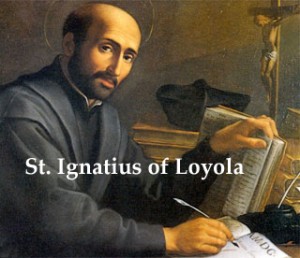 The Discernment of Spirits: Setting the Captives Free – Serves as an introduction to the Spiritual Exercises of St. Ignatius of Loyola
The Discernment of Spirits: Setting the Captives Free – Serves as an introduction to the Spiritual Exercises of St. Ignatius of Loyola
The 14 Rules for Discerning Spirits –
“The Different Movements Which Are Caused In The Soul”
as outlined by St. Ignatius of Loyola
can be found here
Father Timothy M. Gallagher, O.M.V., was ordained in 1979 as a member of the Oblates of the Virgin Mary, a religious community dedicated to retreats and spiritual formation according to the Spiritual Exercises of St. Ignatius. Â Fr. Gallagher is featured on the EWTN series “Living the Discerning Life: Â The Spiritual Teachings of St. Ignatius of Loyola”.Â
For more information on how to obtain copies of Fr. Gallaghers’s various books and audio which are available for purchase, please visit  his  website: www.frtimothygallagher.org
 For the other episodes in this series visit
Fr. Timothy Gallagher’s “Discerning Hearts†page
Tags: discernment of spirits, Father Timothy M. Gallagher, Timothy Gallagher
This entry was posted on Monday, January 27th, 2014 at 11:12 am
You can follow any responses to this entry through the RSS 2.0 feed.
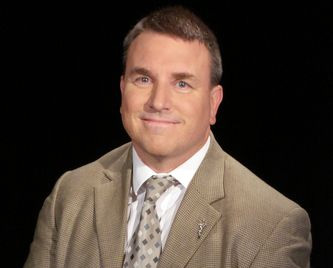 Episode 20 – Great Works in Western Literature with Joseph Pearce – G. K. Chesterton and “The Man Who Was Thursday”
Episode 20 – Great Works in Western Literature with Joseph Pearce – G. K. Chesterton and “The Man Who Was Thursday”
[powerpress]
“A powerful picture of the loneliness and bewilderment which each of us encounters in his single-handed struggle with the universe.”
–C. S. Lewis —
Chesterton’s own response, and riposte, to the Decadence of the 1890s can be found in his novel “The Man Who Was Thursday”. Whereas the Decadents–taking their own perverse inspiration from the dark romanticism of Byron, Shelley and Keats-had stripped the masks off reality” and discovered darkness, Chesterton stripped the masks off reality” (from the “anarchists” in his novel) and discovered light — Joseph Pearce “Ignatius Insight” May 2005
Joseph Pearce is currently the Writer-in-Residence and Visiting Fellow at Thomas More College of Liberal Arts in Merrimack, New Hampshire. He is also Visiting Scholar at Mount Royal Academy in Sunapee, New Hampshire. He is also Visiting Scholar at Mount Royal Academy in Sunapee, New Hampshire. He is  co-editor of the Saint Austin Review (or StAR), an international review of Christian culture, literature, and ideas published in England (Family Publications) and the United States (Sapientia Press). He is also the author of many books, including literary biographies of Solzhenitsyn, J. R. R. Tolkien, C. S. Lewis, G. K. Chesterton, and Oscar Wilde.
You can find the book here
Tags: g. k. chesterton, joseph pearce, Joseph Pearce - G. K. Chesterton
This entry was posted on Monday, January 27th, 2014 at 10:52 am
You can follow any responses to this entry through the RSS 2.0 feed.
Dr. Matthew Bunson discusses the life, times and teachings of St. Peter Chrysologus
-
Born: 406 AD, Imola, Italy
-
Died:Â July 31, 450 AD
Peter was born in Imola, where Cornelius, bishop of Roman Catholic Diocese of Imola, baptized him, educated him, and ordained him a deacon. He was made an archdeacon through the influence of Emperor Valentinian III. Pope Sixtus III appointed Peter as Bishop of Ravenna (or perhaps archbishop) circa 433, apparently rejecting the candidate whom the people of the city ofRavenna elected. The traditional account, as recorded in the Roman Breviary, is that Sixtus had a vision of Pope Saint Peter the Apostle and Saint Apollinaris of Ravenna, the first bishop of that see, who showed Sixtus a young man, the next Bishop of Ravenna. When a group from Ravenna arrived, including Cornelius and his archdeacon Peter from Imola, Sixtus recognized Peter as the young man in his vision and consecrated him as a bishop.
People knew Saint Peter Chrysologus, the Doctor of Homilies, for his short but inspired talks; he supposedly feared boring his audience. His piety and zeal won universal admiration. After hearing oratory of his first homily as bishop, Roman Empress Galla Placidia supposedly gave him the surname Chrysologus, meaning “golden-worded.” Empress Galla Placidia patronized many of projects of Bishop Saint Peter.
In his extant homilies, bishop Peter explained Biblical texts briefly and concisely. He also condemned Arianism and Monophysitism as heresies and explained beautifully the Apostles’ Creed, the mystery of the Incarnation, and other topics in simple and clear language. He dedicated a series of homilies to Saint John the Baptist and the Blessed Virgin Mary. Peter advocated daily reception of Eucharist. He urged his listeners to confide in the forgiveness offered through Christ. He shared the confidence of Saint Pope Leo I the Great (440-461), another doctor of the Church.
A synod held in Constantinople in 448 condemned Eutyches for Monophysitism; Eutyches then appealed to Saint Peter Chrysologus but failed in his endeavour to win the support of the Bishop. The Acts of the Council of Chalcedon(451) preserves the text of letter of Saint Peter Chrysologus in response to Eutyches; Peter admonishes Eutyches to accept the ruling of the synod and to give obedience to the Bishop of Rome as the successor of Saint Peter.
Archbishop Felix of Ravenna in the early eighth century collected and preserved 176 of his homilies. Various authors edited and translated these works into numerous languages.
Death and veneration
St Peter died circa or after 450 during a visit to Imola, the town of his birth. Older reference books say he died on 2 December, but a more recent interpretation of the ninth-century “Liber Pontificalis Ecclesiae Ravennatis” indicated that he died on 31 July. When in 1729 he was declared a Doctor of the Church, his feast day, not already included in the Tridentine Calendar, was inserted in the Roman Catholic calendar of saints for celebration on 4 December. In 1969 his feast was moved to 30 July, as close as possible to the day of his death, 31 July, the feast day of Saint Ignatius of Loyola.
Dr. Matthew Bunson, Senior Fellow of the St. Paul Center for Biblical Theology, is one of the United States’ leading authorities on the papacy and the Church.
His books include: The Encyclopedia of Catholic History; The Encyclopedia of Saints; Papal Wisdom; All Shall Be Well; Encyclopedia of the Roman Empire; and The Angelic Doctor: The Life and World of St. Thomas Aquinas; The Pope Encyclopedia; We Have a Pope! Benedict XVI, the first Catholic biography of the Holy Father in the English language; the Encyclopedia of U.S. Catholic History; Pope Francis. His also the editor of OSV’s “The Catholic Answer” magazine.
Tags: matthew bunson, st peter chrysologus
This entry was posted on Monday, January 27th, 2014 at 10:51 am
You can follow any responses to this entry through the RSS 2.0 feed.
Episode 17 – The Holy Rule of St. Benedict: A Spiritual Path for Today’s World with Fr. Mauritius Wilde O.S.B., PhD.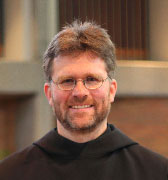
The Value of Listening and Silence
[powerpress]
From the Holy Rule of St. Benedict:
CHAPTER XLII
That No One Speak after Complin
Monks should always be given to silence, especially, however, during the hours of the night. Therefore, on every day, whether of fast or of a mid-day meal, as soon as they have risen from their evening meal, let all sit together in one place, and let one read the Conferences or the Lives of the Fathers, or something else that will edify the hearers; not, however, the Heptateuch or the Books of the Kings, because it would not be wholesome for weak minds to hear this part of the Scripture at that hour; they should, however, be read at other times. But if it was a fast-day, then, when Vespers have been said, and after a short interval, let them next come together for the reading of the Conferences, as we have said; and when the four or five pages have been read, or as much as the hour will permit, and all have assembled in one place during the time of the reading, let him also come who was perchance engaged in work enjoined on him. All, therefore, having assembled in one place, let them say Complin, and after going out from Complin, let there be no more permission from that time on for anyone to say anything.
If, however, anyone is found to break this rule, let him undergo heavy punishment, unless the needs of guests should arise, or the Abbot should perhaps give a command to anyone. But let even this be done with the utmost gravity and moderation.
Father Mauritius Wilde, OSB, Ph.D., did his philosophical, theological and doctoral studies in Europe. He is the author of several books and directs retreats regularly. He serves as Prior of our monastery in Schuyler.
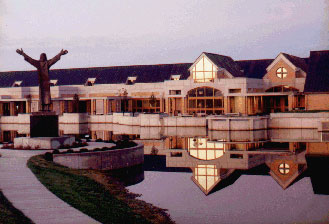 For more information about the ministry of the the Missionary Benedictines of Christ the King Priory in Schuyler, Nebraska visit here:
For more information about the ministry of the the Missionary Benedictines of Christ the King Priory in Schuyler, Nebraska visit here:
Tags: Holy Rule of St. Benedict, Mauritius
This entry was posted on Monday, January 27th, 2014 at 5:52 am
You can follow any responses to this entry through the RSS 2.0 feed.
THE WAY OF PERFECTION
By
St. Teresa of Avila
Chapter 14 & 15
[powerpress]
For the pdf containing the complete text and footnotes click here
Treats of the great importance of not professing anyone whose spirit is contrary to the things aforementioned.
Treats of the great advantage which comes from our not excusing ourselves, even though we find we are unjustly condemned.
For other audio chapters of
“The Way of Perfection”
THE WAY OF PERFECTION
by
ST. TERESA OF AVILA
Translated & Edited by
E. ALLISON PEERS
from the Critical Editon of
P. SILVERIO DE SANTA TERESA, C.D.
Tags: st. teresa of avila, The Way of Perfection
This entry was posted on Sunday, January 26th, 2014 at 9:56 am
You can follow any responses to this entry through the RSS 2.0 feed.
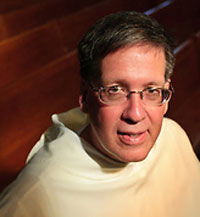 Episode 2 St. Catherine of Siena:  Her Life and Teachings with Fr. Thomas McDermott-
Episode 2 St. Catherine of Siena:  Her Life and Teachings with Fr. Thomas McDermott-
[powerpress]
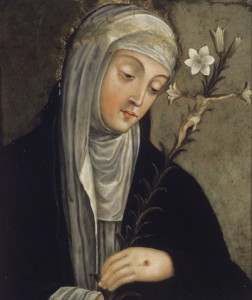 In this episode, Fr. McDermott discusses the difference between solitude and isolation by means of moments in St. Catherine’s life.
In this episode, Fr. McDermott discusses the difference between solitude and isolation by means of moments in St. Catherine’s life.
 What is a “Third Order” and why did St. Catherine choose this means to live out her life?  A dream affected St. Catherine deeply.  Fr. McDermott teaches how we can discern dreams that might occur in our lives. Â
Why would St. Catherine have a special devotion to St. Mary Magdalene?  Fr. McDermott discusses the significance of the “fundamental maxim” and the imagery of  “the well”, and the times of temptation that began to occur in her life and the experience of “The Dark Night of Self-Knowledge”.
Fr. Thomas McDermott, OP is Regent of Studies for the Dominican Province of St. Albert the Great and is the author of “Catherine of Siena: Spiritual Development in Her Life and Teaching” (Paulist, 2008) and  “Filled with all the Fullness of God: An Introduction to Catholic Spirituality”.  He obtained a doctorate in spiritual theology from the Angelicum and taught for several years at Kenrick-Glennon Seminary in St. Louis.  He crrently serves as pastor at St. Vincent Ferrer, in Chicago, IL.
Our series is based on “Catherine of Siena”
by Fr. McDermott
Tags: St. Catherine, Thomas McDermott
This entry was posted on Sunday, January 26th, 2014 at 1:08 am
You can follow any responses to this entry through the RSS 2.0 feed.
As part of the Healthy Living Series, Deacon James Keating discusses Marriage, God, and Spousal Prayer. Â Very powerful.
[powerpress]
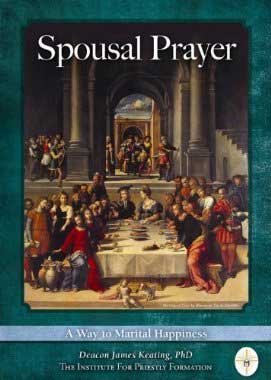 You can find the book here
You can find the book here
From the description:
Deacon James Keating’s newest book, Spousal Prayer: A Way to Marital Happiness affirms that the sharing of hearts is a necessary commitment in both marriage and prayer. If we can learn what the key elements to sharing the heart are and equally what the key elements to receiving the heart of another are, then we will know the greatest of intimacy in both prayer and marriage. The mingling of the love of spouse with and in the love of God is and has always been the foundation for a life of peace, creativity, and vibrancy, not to mention sanctity. In fact, we cannot even understand what marriage is unless we look at how Christ loved His Bride, the Church, till the end (Jn 13:1). For the baptized, Christ has joined His love for the Church to the Sacrament of Marriage and Marriage, to His love for the Church. Each couple is called to allow Jesus to bring them into this great love of His. The couple is not supposed to do all the work of love; they are called to let Jesus gift them with His own spousal love. In other words, couples should let Jesus live His spousal love for the Church over again in their own love for one another. They do this by simply asking Him in prayer to do so and by sharing their needs and desires with Him. Marriage is not a self-help relationship; it is a deep partnership with Christ.
Tags: Deacon James Keating, james keating, marriage
This entry was posted on Sunday, January 26th, 2014 at 12:54 am
You can follow any responses to this entry through the RSS 2.0 feed.
Fr. Maciej Zieba, OP offers tremendous insight and a wonderful resource in understanding the heart of Catholic 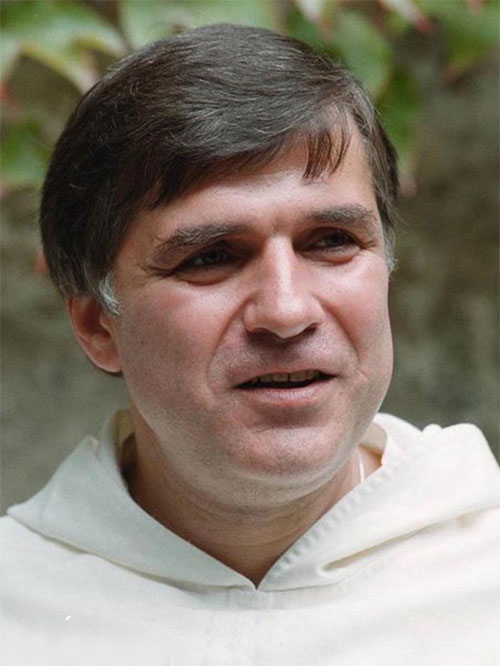 Social Teaching in regards to democratic capitalism.  In Papal Economics: The Catholic Church on Democratic Capitalism, from Rerum Novarum to Caritas in Veritate, he gives an overview the key social encyclicals  from Leo XIII’s Rerum Novarum (1891), through John Paul II’s Centesimus Annus a century later, and finally to Benedict XVI’s Caritas in Veritate (2009). While demonstrating the continuity among the popes,  this work also reveals that the Church’s teaching has evolved in certain key respects—particularly in its judgment on socialism.  Fr. Zieba, a close associate of Pope John Paul II.  He was a key player in the Polish Solidarity movement and is the director of the European Solidarity Center and the founder of the Tertio Millennio Institute in Poland.
Social Teaching in regards to democratic capitalism.  In Papal Economics: The Catholic Church on Democratic Capitalism, from Rerum Novarum to Caritas in Veritate, he gives an overview the key social encyclicals  from Leo XIII’s Rerum Novarum (1891), through John Paul II’s Centesimus Annus a century later, and finally to Benedict XVI’s Caritas in Veritate (2009). While demonstrating the continuity among the popes,  this work also reveals that the Church’s teaching has evolved in certain key respects—particularly in its judgment on socialism.  Fr. Zieba, a close associate of Pope John Paul II.  He was a key player in the Polish Solidarity movement and is the director of the European Solidarity Center and the founder of the Tertio Millennio Institute in Poland.
[powerpress]
You can find the book here
“For a long time to come, this book may well be the definitive work on the economic teaching of the modern popes.” —Michael Novak
“Powerful . . . Should move the Catholic discussion of twenty-first-century economics beyond the familiar refrains†—George Weigel
Tags: catholic social teaching, Maciej Zieba, Rerum Novarum
This entry was posted on Sunday, January 26th, 2014 at 12:09 am
You can follow any responses to this entry through the RSS 2.0 feed.
Episode 9- Seeking Truth with Sharon Doran – The Temptation of Jesus (PART 1)  [powerpress]
[powerpress]
Sharon Doran serves as the teaching director of “Seeking Truth.†An experienced Bible Study teacher, Sharon has a passion for scripture that will motivate and challenge you to immerse yourself in God’s Word and apply His message to your every day life.
Episode 9 –
Temptation of Jesus
Matthew 4, Mark 1 and Luke 4 (part 1)
Temptation…. Who can resist it? Led by the Holy Spirit, Jesus goes out to the desert tobattle Satan, the father of lies. Drawing from the Hebrew Scriptures, Sharon shows how this pivotal event in the ministry of Jesus is connected with so many Old Testament figures: Adam, Elijah, Elisha and King David. In addition, Sharon teaches us that the temptations before Jesus are no different than the ones Adam faced, no different than the ones we face. But armed with the Word of God, Jesus triumphs over the Evil One and the angels are sent to minister to Him.
 “Seeking Truth†is an in depth Catholic Bible Study, commissioned by the Archdiocese of Omaha in response to John Paul II’s call to the New Evangelization as well as Pope Benedict XVI’s exhortation for all Catholics to study scripture. To learn more go to:www.seekingtruth.net
“Seeking Truth†is an in depth Catholic Bible Study, commissioned by the Archdiocese of Omaha in response to John Paul II’s call to the New Evangelization as well as Pope Benedict XVI’s exhortation for all Catholics to study scripture. To learn more go to:www.seekingtruth.net
Tags: Desert Temptation of Jesus, Sharon Doran, Temptation of Jesus
This entry was posted on Saturday, January 25th, 2014 at 4:05 pm
You can follow any responses to this entry through the RSS 2.0 feed.

